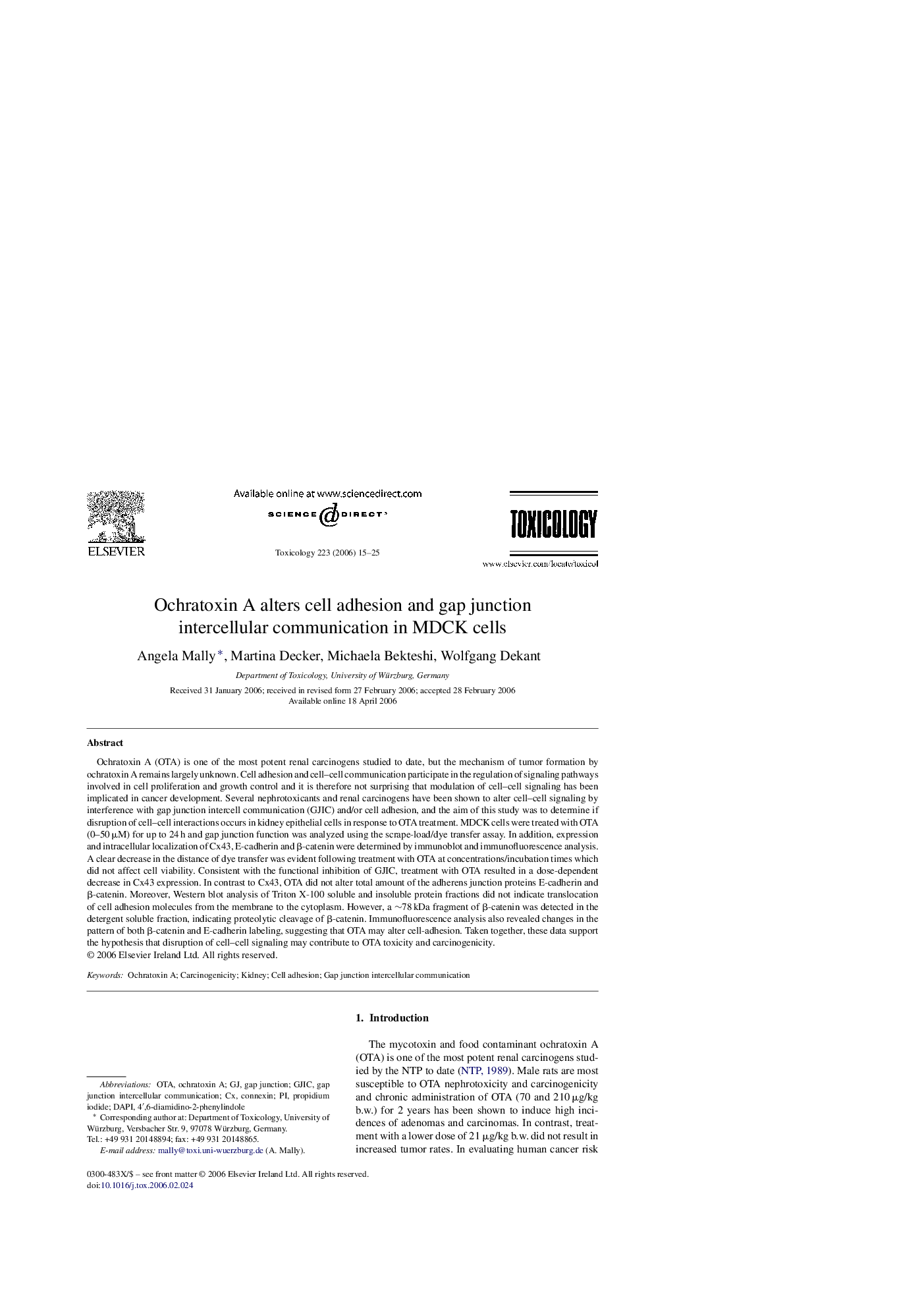| کد مقاله | کد نشریه | سال انتشار | مقاله انگلیسی | نسخه تمام متن |
|---|---|---|---|---|
| 2598253 | 1562433 | 2006 | 11 صفحه PDF | دانلود رایگان |

Ochratoxin A (OTA) is one of the most potent renal carcinogens studied to date, but the mechanism of tumor formation by ochratoxin A remains largely unknown. Cell adhesion and cell–cell communication participate in the regulation of signaling pathways involved in cell proliferation and growth control and it is therefore not surprising that modulation of cell–cell signaling has been implicated in cancer development. Several nephrotoxicants and renal carcinogens have been shown to alter cell–cell signaling by interference with gap junction intercell communication (GJIC) and/or cell adhesion, and the aim of this study was to determine if disruption of cell–cell interactions occurs in kidney epithelial cells in response to OTA treatment. MDCK cells were treated with OTA (0–50 μM) for up to 24 h and gap junction function was analyzed using the scrape-load/dye transfer assay. In addition, expression and intracellular localization of Cx43, E-cadherin and β-catenin were determined by immunoblot and immunofluorescence analysis. A clear decrease in the distance of dye transfer was evident following treatment with OTA at concentrations/incubation times which did not affect cell viability. Consistent with the functional inhibition of GJIC, treatment with OTA resulted in a dose-dependent decrease in Cx43 expression. In contrast to Cx43, OTA did not alter total amount of the adherens junction proteins E-cadherin and β-catenin. Moreover, Western blot analysis of Triton X-100 soluble and insoluble protein fractions did not indicate translocation of cell adhesion molecules from the membrane to the cytoplasm. However, a ∼78 kDa fragment of β-catenin was detected in the detergent soluble fraction, indicating proteolytic cleavage of β-catenin. Immunofluorescence analysis also revealed changes in the pattern of both β-catenin and E-cadherin labeling, suggesting that OTA may alter cell-adhesion. Taken together, these data support the hypothesis that disruption of cell–cell signaling may contribute to OTA toxicity and carcinogenicity.
Journal: Toxicology - Volume 223, Issues 1–2, 1 June 2006, Pages 15–25